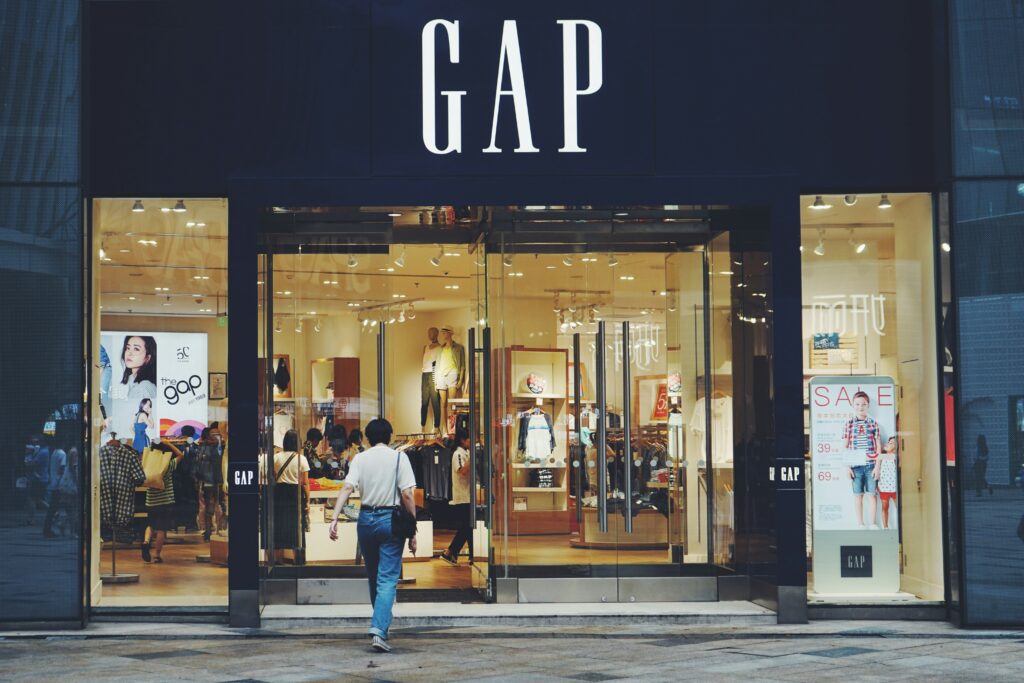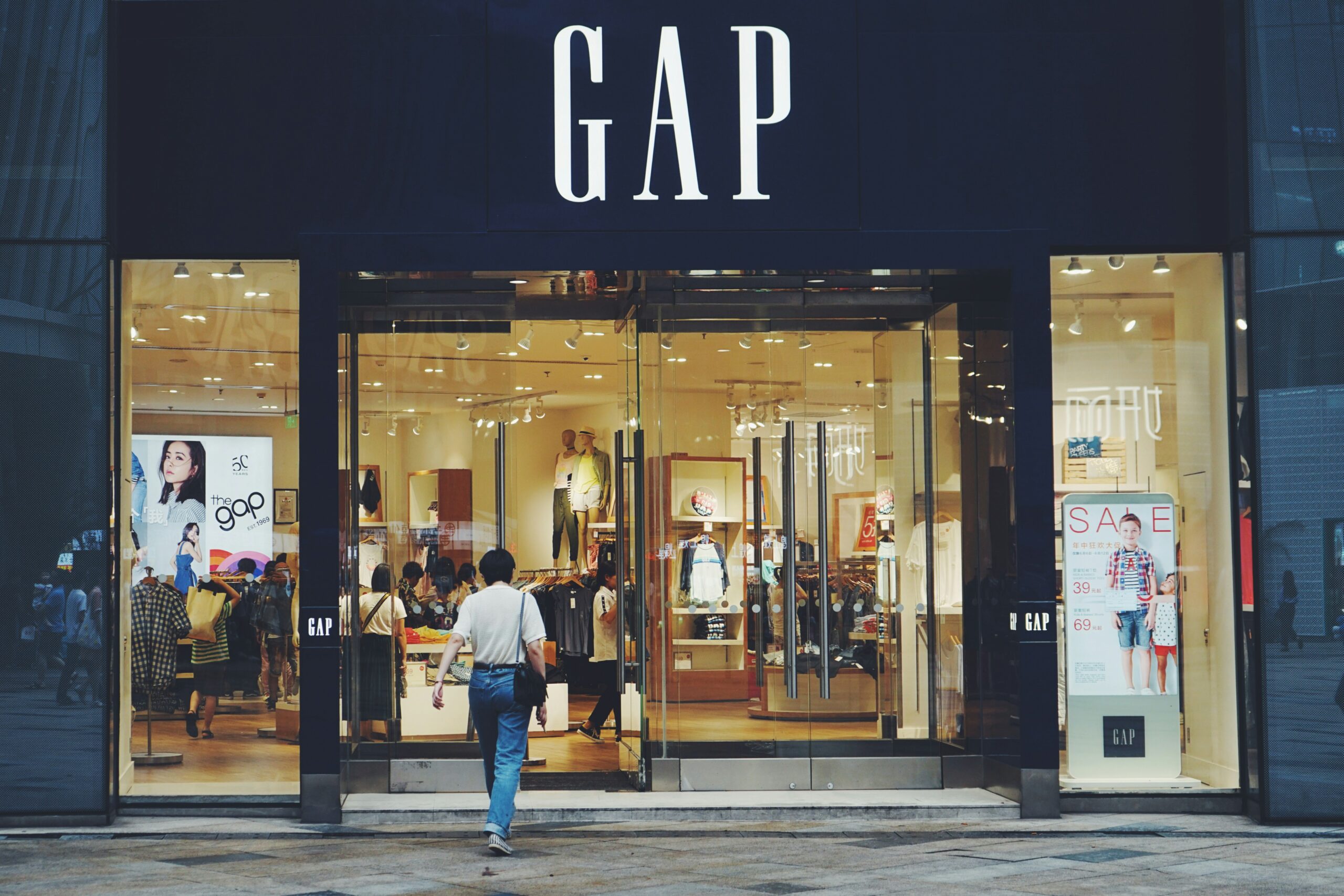GAP Logo: Meaning, History, Design Influences, and Evolution

Contents
The GAP logo is an iconic symbol that has become synonymous with the globally recognized clothing brand. Understanding the story behind this logo can provide insight into the brand’s values and evolution over the years. From its humble beginnings to the controversial redesign in 2010, the GAP logo has been an ever-evolving representation of the brand. In this article, we will delve into the meaning, history, design influences, and evolution of the GAP logo.
Understanding the GAP Logo
The GAP logo is more than just a visual representation of the brand. It carries meaning and symbolism that resonates with consumers around the world. By exploring the elements that make up the logo, we can gain a deeper understanding of its significance.
When delving into the design of the GAP logo, it’s essential to note the font choice. The bold, capitalized letters not only spell out the brand’s name but also convey a sense of strength and authority. This choice reflects GAP’s position as a longstanding and reputable fashion retailer, known for its quality and reliability.
The Meaning Behind the GAP Logo
The GAP logo, with its capitalized letters, represents the brand’s name and identity. It exudes simplicity and clarity, reflecting the brand’s commitment to straightforward and timeless fashion. The boldness of the letters conveys strength and confidence, while the clean lines and geometric shapes create a sense of balance and harmony.
Furthermore, the color scheme of the logo plays a crucial role in shaping consumer perceptions. The deep blue hue not only conveys a sense of trust and dependability but also evokes a feeling of sophistication and elegance. This color choice aligns with GAP’s positioning as a classic yet contemporary fashion brand, appealing to a wide range of consumers.
The Symbolism in the GAP Logo
Beyond its literal representation, the GAP logo holds symbolic value. The distinct blue square that encapsulates the letters symbolizes stability and trustworthiness, qualities that consumers seek when shopping for clothing. The square also acts as a foundation, representing the brand’s solid reputation and enduring presence in the fashion industry.
Moreover, the geometric shape of the square can be interpreted as a symbol of precision and structure, reflecting GAP’s attention to detail in its designs and commitment to delivering well-crafted apparel. This symbolism reinforces the brand’s image as a reliable and consistent choice for fashion-conscious individuals seeking quality garments.
Tracing the History of the GAP Logo
To fully appreciate the GAP logo, we must explore its journey through time. From its inception to its current form, the logo has undergone various changes that reflect the brand’s evolving identity.

Delving deeper into the history of the GAP logo unveils a fascinating narrative of design evolution and brand adaptation. The logo, a visual representation of the brand’s essence, has not only mirrored the cultural shifts of each era but has also played a pivotal role in shaping consumer perceptions and market positioning.
The Original GAP Logo
When the GAP brand was founded in 1969, its logo consisted of a simple lowercase “g” encased in a circle. This design conveyed a sense of approachability and friendliness, aligning with the brand’s mission to provide casual and comfortable clothing for everyone.
The choice of a lowercase letter in the original logo was a strategic decision that aimed to create a sense of inclusivity and accessibility. By opting for a softer, more informal typeface, GAP positioned itself as a brand that was not only stylish but also relatable to a wide audience, setting the tone for its future branding endeavors.
Significant Changes Over the Years
As the brand grew and adapted to the changing fashion landscape, so did its logo. In the 1980s, the lowercase “g” was replaced with uppercase letters, symbolizing the brand’s increasing prominence and market presence. Throughout the years, minor tweaks were made to the font and spacing, enhancing the logo’s legibility and visual appeal.
These subtle modifications to the GAP logo over time reflect the brand’s commitment to staying relevant and resonating with its target audience. By striking a balance between honoring its heritage and embracing modernity, GAP has successfully navigated the complexities of brand identity in a dynamic retail environment.
Design Influences on the GAP Logo
The design of the GAP logo is not isolated from external influences. Various factors, such as typography and color choices, have played a significant role in shaping the logo’s aesthetic.
The Role of Typography in the GAP Logo
The font selection for the GAP logo has always favored clean, sans-serif typefaces. This choice reflects the brand’s desire to communicate simplicity and clarity. The typography used in the logo conveys a sense of modernity, while remaining timeless and adaptable.
Color Choices and Their Impact
The color palette employed in the GAP logo has evolved throughout its history. In the early days, the logo featured vibrant, eye-catching colors that resonated with the energetic spirit of the brand. Over time, the palette has shifted to a more restrained and sophisticated range of blue tones, reinforcing the brand’s reputation for quality and reliability.
The Evolution of the GAP Logo
The journey of the GAP logo has not been without its controversies and challenges. One particular redesign in 2010 sparked intense public debate and shed light on the powerful connection between consumers and brand identity.
The Controversial 2010 Logo Redesign
In an attempt to modernize its logo, GAP introduced a new design in 2010 that deviated significantly from its iconic look. The change was met with widespread backlash from loyal customers and design enthusiasts alike. The new logo, featuring a gradient-filled square, was deemed unoriginal and out of touch with the brand’s core values.
The Return to the Classic Logo
As a testament to the importance of brand loyalty, GAP listened to its customers and swiftly reverted to its classic logo. This move demonstrated the power of a strong and recognizable brand identity and reinforced the bond between the brand and its consumers.
The Current GAP Logo and Its Reception
The current GAP logo represents a harmonious blend of the brand’s heritage and contemporary design. Its return to the classic design has been well-received, with consumers recognizing and appreciating the brand’s commitment to its roots.
Public Perception of the GAP Logo
The GAP logo continues to evoke positive sentiments among consumers. It is recognized as a symbol of quality, reliability, and timeless fashion. The logo’s simplicity and clarity make it memorable and easily identifiable, allowing it to stand the test of time in a fast-paced and ever-changing industry.
The Role of the Logo in GAP’s Brand Identity
The GAP logo serves as a visual cornerstone of the brand’s identity. It portrays the brand’s values, reputation, and aspirations. Through consistent use and careful curation, the logo has become a powerful tool in communicating the essence of the GAP brand to consumers worldwide.
In conclusion, the GAP logo is more than just a visual representation. It carries meaning, history, and influences that shape its evolution. By understanding and appreciating the story behind this iconic logo, we gain insight into the brand’s identity and the bond it shares with its customers. The GAP logo is a testament to the enduring power of simplicity, clarity, and timeless design in the world of fashion.
Inspired by the iconic GAP logo and its impact on brand identity? Your logo could be the next symbol of timeless design and storytelling. With Boon, creating a custom logo that embodies your business values and connects with your audience is just a few clicks away. Whether you’re in fashion, tech, or any industry, Boon’s AI-driven platform is designed to bring your logo design preferences to life. Let’s make a logo! and start building your brand’s legacy today.

Mia Vargas is our Senior SEO & Branding Specialist, a dynamic force in digital strategy with a keen eye for brand storytelling. With over a decade of experience in optimizing online visibility and shaping brand identities, Mia seamlessly combines her technical SEO expertise with her passion for creativity. She is skilled at crafting strategies that not only elevate search rankings but also resonate with target audiences, ensuring our clients build meaningful, lasting connections. Known for her innovative approach and trend-focused insights, Mia plays a crucial role in driving our team to stay ahead in a rapidly changing digital landscape, balancing analytics with artistic flair to deliver impactful results.
